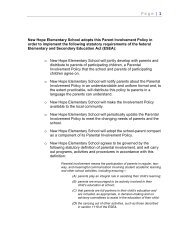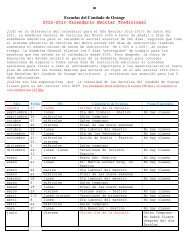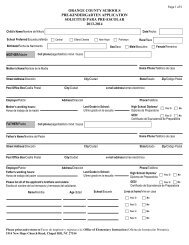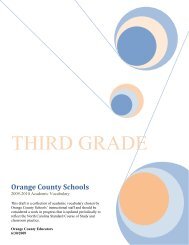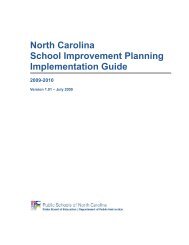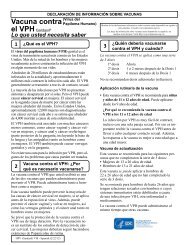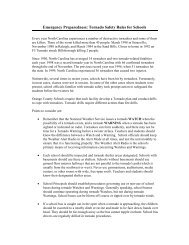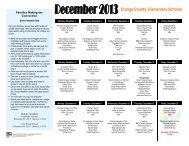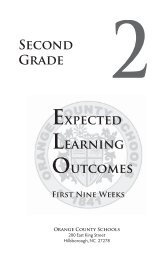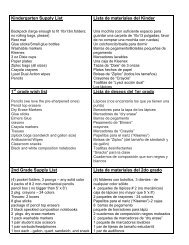Closing the Achievement Gap - Washington State School Directors ...
Closing the Achievement Gap - Washington State School Directors ...
Closing the Achievement Gap - Washington State School Directors ...
You also want an ePaper? Increase the reach of your titles
YUMPU automatically turns print PDFs into web optimized ePapers that Google loves.
If it is accepted that students in <strong>the</strong> lowest quartile will make only normalannual growth, those students will continue to stay in <strong>the</strong> lowest quartile,and <strong>the</strong> gap will never close. Students only “catch up” by making morethan a year’s worth of growth. Extended learning time and targetedremediation are <strong>the</strong> strategies needed to increase <strong>the</strong> rate of growth forstudents in <strong>the</strong> lowest quartile. Extended learning time can be in terms oflonger school days, longer school years, after-school tutorials, Saturdayenrichment, or summer school.In-school instructional time must be used to accelerate achievement forthose students in <strong>the</strong> lowest quartile. Grade-level reading should perhaps be<strong>the</strong> main priority in closing <strong>the</strong> achievement gap, and <strong>the</strong>refore receive amore significant share of <strong>the</strong> instructional day. A student who is two tothree years behind in reading, for example, will require time beyond <strong>the</strong>time devoted to reading for <strong>the</strong> general population to come up to gradelevel. How time is used during <strong>the</strong> school day for <strong>the</strong>se students must beexamined. The best use of existing time may be <strong>the</strong> same number of schoolcalendar days used in more strategic ways.It is also important to ensure that opportunities to learn are carefullystructured to provide additional time for targeted remediation withoutstudents losing out on learning taking place in <strong>the</strong> classroom. In a highperformingelementary school, in-class instruction is designed for maintenanceof grade-level skills and exposure to grade-level material while <strong>the</strong>extended day program is for remediation. <strong>School</strong>s that provide real-timeremediation strategies so that students stay on track, keep students fromfalling far<strong>the</strong>r and far<strong>the</strong>r behind. Finally, targeted remediation and extendedlearning opportunities should be implemented along with assessmentsystems that measure annual rates of growth, especially in readingand math. Level Tests that measure spring to spring achievement are usedby many districts.Questions to Guide <strong>the</strong> Discussion1. How do <strong>the</strong> schools currently structure <strong>the</strong>ir school day and schoolyear to maximize academic learning time?2. Is modifying <strong>the</strong> calendar for learning something that should bediscussed by schools in <strong>the</strong> district? How is <strong>the</strong> district addressing <strong>the</strong>challenge of summer learning loss for students?3. What assessment procedures do <strong>the</strong> schools have in place to identifystudents in need of specific, targeted remediation?4. What developmental and remedial learning opportunities do <strong>the</strong>schools currently provide during <strong>the</strong> school day, after school and in<strong>the</strong> summer? How are <strong>the</strong>y staffed and are adequate resources targetedto those programs and strategies? What assessment data exists toshow how successful <strong>the</strong>se current programs are?WASHINGTON STATE SCHOOL DIRECTORS’ ASSOCIATION31




